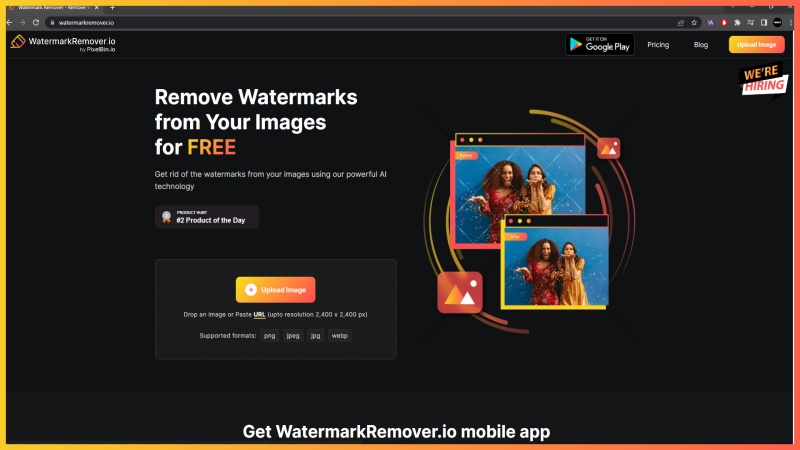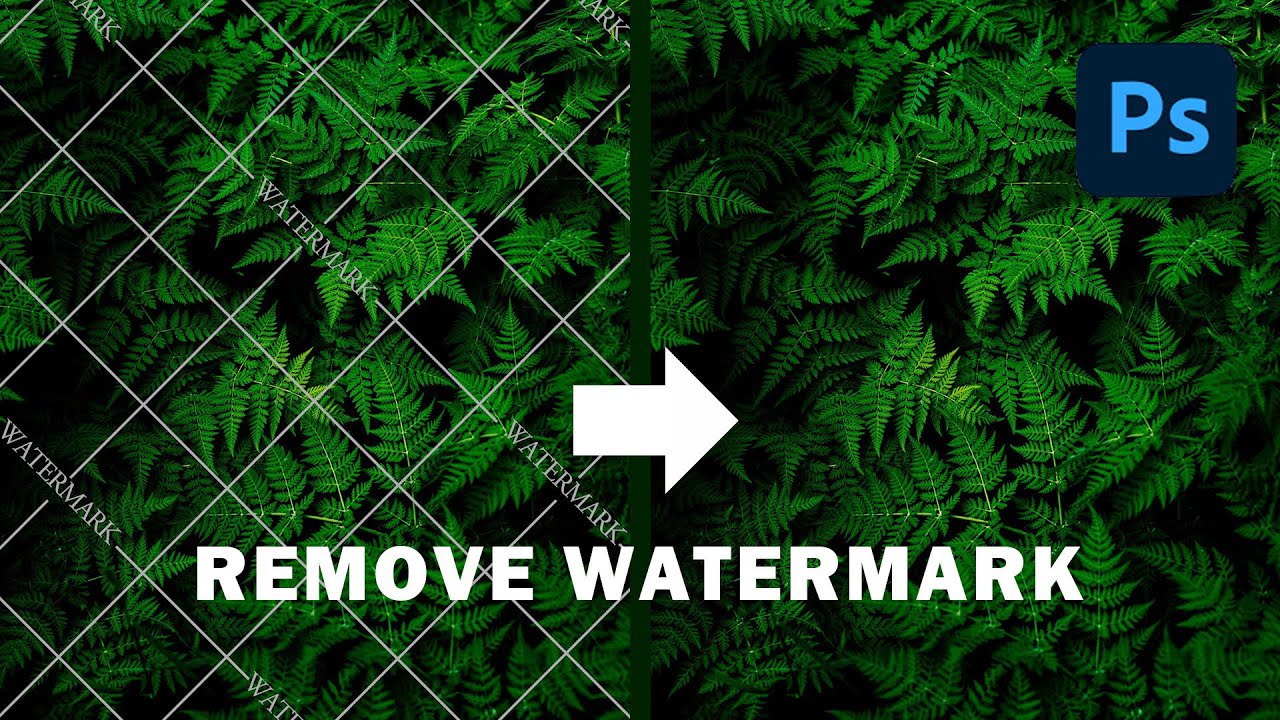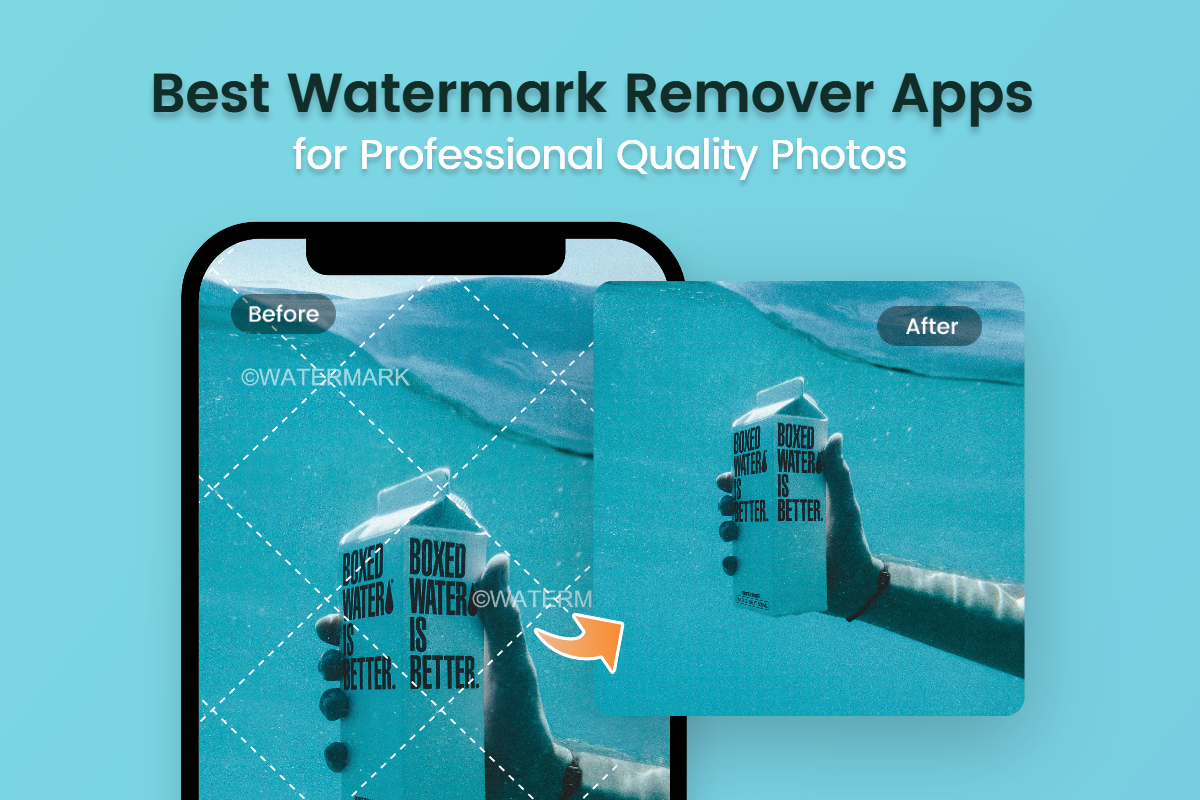Ever come across a stunning Shutterstock image but felt frustrated by that pesky watermark? You’re not alone! Watermarks are added to protect copyright and prevent unauthorized use, but sometimes you just want to see the full image clearly or use it for personal projects. Luckily, there are free online tools designed to remove watermarks easily and quickly. These tools can help you access images without the watermark, making your editing process smoother. In this guide, we’ll explore some of the best free options out there and how they can help you get the images you need with minimal hassle.
Why Use a Watermark Remover for Shutterstock Images

There are several reasons why someone might consider using a watermark remover on Shutterstock images. First, if you’re a designer, content creator, or social media manager, having access to clear, watermark-free images can save you time and effort. Instead of searching for alternate images or purchasing licenses, a watermark remover can give you quick access to visuals that fit your needs — at least for personal, educational, or non-commercial use.
Another reason is convenience. Sometimes, you stumble upon an image that’s perfect for your project, but the watermark makes it hard to see the full detail. Removing the watermark allows you to evaluate the image properly before deciding whether to buy or license it. Additionally, for those practicing photo editing or learning design skills, working with clean images can be more beneficial than dealing with watermarks that distract or obscure details.
However, it’s important to remember that removing watermarks from copyrighted images without permission can be legally questionable. Always respect the rights of content creators and use watermark removal tools responsibly, ideally for images you have the right to edit or use. When used ethically, these tools can be a helpful step in the creative process, especially for personal projects, mockups, or educational purposes.
3. Top Free Online Shutterstock Watermark Removal Tools

If you’re looking to clean up your images by removing watermarks from Shutterstock, you’re in luck! There are several free online tools that make this process straightforward and hassle-free. Let’s take a look at some of the most popular and reliable options:
- Inpaint: Known for its user-friendly interface, Inpaint allows you to quickly remove watermarks by simply highlighting the area you want to fix. It uses intelligent algorithms to fill in the selected area seamlessly, making your images look natural.
- Fotor Watermark Remover: Fotor offers a dedicated online tool designed to erase watermarks from images. It’s perfect for quick edits, and you don’t need any prior experience to get started.
- Pixlr Editor: A powerful online photo editor that rivals desktop software. Pixlr includes clone and healing tools that can help you manually remove watermarks or unwanted objects with precision.
- Photopea: Similar to Photoshop, Photopea is a free browser-based editor that supports layers and advanced editing features. While it requires a bit more skill, it offers great control over watermark removal.
- Remove.bg: Originally designed for removing backgrounds, Remove.bg also offers capabilities to erase unwanted objects, including watermarks. It’s quick, simple, and effective for basic needs.
Each tool has its strengths and limitations. For instance, Inpaint and Fotor are perfect for simple, quick edits, while Pixlr and Photopea are better suited for detailed work if you’re familiar with photo editing concepts. Experimenting with a few of these can help you find the one that fits your workflow best.
4. How to Use Watermark Removal Tools Effectively

Using online watermark removal tools might seem straightforward, but to get the best results, a few tips and tricks can make a huge difference. Here’s how to approach it effectively:
Step 1: Choose the Right Tool
Pick a tool based on your needs. For quick fixes, Inpaint or Fotor might be enough. For more detailed editing, try Pixlr or Photopea. Remember, simplicity is key if you’re new to photo editing.
Step 2: Upload Your Image
Most tools have an easy drag-and-drop feature or a straightforward upload button. Make sure your image quality is high to achieve better results after editing.
Step 3: Highlight the Watermark
Use the selection or brush tools to carefully outline or paint over the watermark area. Take your time here—precision yields a more natural-looking result. Some tools have automatic selection features that can help with this process.
Step 4: Apply the Removal
Once you’ve marked the watermark, activate the removal function. The tool will analyze the surrounding pixels and fill in the marked area accordingly. If the result isn’t perfect, don’t hesitate to undo and try again or make manual adjustments.
Step 5: Fine-Tune the Image
After the initial removal, you may notice some imperfections or mismatched textures. Use clone stamps, healing brushes, or smoothing tools to blend the area seamlessly with the rest of the image.
Step 6: Save Your Edited Image
When you’re satisfied with the result, save your image in the desired format. Always keep a copy of the original, just in case you want to make further edits later.
Additional Tips:
- Work on a copy: Always duplicate your original image before editing.
- Zoom in: For precise work, zoom into the image to accurately select the watermark.
- Be patient: Some images require multiple attempts or manual touch-ups for the best results.
Remember, while these tools are great for quick edits, they might not produce perfect results every time, especially with complex watermarks. Practice makes perfect, so don’t hesitate to experiment and refine your technique for the best possible outcome!
5. Legal Considerations When Removing Watermarks

Before you dive into removing watermarks from images, it’s really important to understand the legal side of things. Watermarks are often used by photographers and content creators to protect their work and ensure they get credit or compensation. Removing them without permission can lead to serious legal trouble, including copyright infringement claims.
Think of watermarks as a sign that says, “Hey, this image is protected by copyright.” If you remove it without the owner’s consent, you might be infringing on their rights, which can result in legal penalties, fines, or even lawsuits. So, always ask yourself:
- Do I have permission from the copyright owner to remove the watermark?
- Am I using the image for personal, non-commercial purposes, or do I plan to publish or sell it?
- Is the image licensed for free use, or am I violating the licensing terms?
In some cases, using watermarked images without permission can also harm your reputation or lead to takedown notices, especially if you’re using the images online. To stay on the right side of the law, consider these tips:
- Always use images that are labeled for free use or are in the public domain.
- Buy a proper license if you need high-quality images for commercial projects.
- When in doubt, contact the original creator or copyright holder for permission.
Remember, removing watermarks to pass off someone else’s work as your own is unethical and can have serious legal consequences. It’s better to find legitimate ways to access or create images—whether that’s through free stock photo sites, creating your own images, or purchasing licenses. Respecting creators’ rights not only keeps you safe legally but also supports artists and photographers who work hard to produce beautiful content.
6. Tips for Choosing the Right Watermark Removal Tool
Picking the perfect watermark remover can feel overwhelming with so many options out there. But don’t worry! Here are some handy tips to help you choose a tool that fits your needs, is easy to use, and produces good results.
1. Consider Ease of Use
Look for tools with a user-friendly interface. If you’re a beginner, you want something that doesn’t require a lot of technical know-how. Many online tools offer simple drag-and-drop features or straightforward steps to remove watermarks without a steep learning curve.
2. Check for Compatibility
Make sure the tool works well with your device—whether you’re on Windows, Mac, or mobile. Some tools are browser-based and work on any device, while others might require downloads or specific operating systems.
3. Look for Free Features
Since you’re after free tools, verify what features are included at no cost. Some tools might have premium options that require payment, but the basic watermark removal should be available for free. Also, check if there are any limitations like size restrictions or watermarks added to the output.
4. Evaluate Output Quality
The main goal is to get a clean, natural-looking image. Before settling, try out a few tools with your images to see which one preserves the quality best. Look for reviews or sample results to gauge their effectiveness.
5. Read User Reviews and Ratings
See what other users are saying. Reviews can reveal how well the tool performs in real-world scenarios, how reliable it is, and if there are any common issues. Trustworthy platforms often have community feedback that can guide your choice.
6. Consider Privacy and Security
If uploading sensitive or personal images, ensure the tool respects your privacy. Check if the platform deletes your images after processing and doesn’t store or misuse your data.
7. Test Before Committing
Many tools let you try a demo or process a sample image for free. Use this chance to see if the outputs meet your expectations before you start working on important projects.
In summary, take your time to explore different options, prioritize ease of use, quality, and safety, and always respect copyright laws. The right watermark remover can make your editing process smoother and more enjoyable without compromising on results or legality.
7. Alternative Methods for Accessing Shutterstock Images Legally
While it might be tempting to look for quick fixes to remove watermarks from Shutterstock images, it’s always best to play it safe and stick to legal and ethical methods. After all, these images are protected by copyright law, and respecting creators’ rights is essential. Luckily, there are several legitimate ways to access high-quality Shutterstock images without running into legal trouble.
First off, consider purchasing the images you need. Shutterstock offers various subscription plans and on-demand options that give you legal access to their extensive library. These plans are usually cost-effective, especially if you need multiple images, and they come with licenses that allow you to use the images for commercial or personal projects.
Another great option is to look for free images with similar quality and subject matter. Websites like Unsplash, Pexels, and Pixabay provide high-resolution photos that are free to use, often even for commercial purposes. While they might not be the exact Shutterstock image you were after, they can serve as excellent alternatives without any legal concerns.
Additionally, Shutterstock sometimes offers free trials or promotional downloads. If you’re just starting out or need a small number of images, taking advantage of these offers can be a smart move. Just remember to cancel before the trial ends if you don’t want to be charged.
Lastly, if you have a specific project or event, consider reaching out directly to photographers or content creators. Sometimes, they’re happy to license their images at a reasonable rate or even share them for free if your project aligns with their interests.
To sum up, the key to accessing Shutterstock images legally is to opt for licensed purchases, explore free alternatives, or utilize promotional offers. It might take a little extra time, but it’s worth it to support creators and avoid potential legal issues down the line.
8. Conclusion and Final Thoughts on Watermark Removal Tools
In the world of digital image editing, watermark removal tools can seem like a handy shortcut—especially when you’re eager to use a specific image without paying for it. However, it’s crucial to remember that watermarks are there for a reason: to protect the rights of content creators and copyright holders. Using watermark removal tools on copyrighted images without permission is not only unethical but also potentially illegal.
That said, there are legitimate ways to access high-quality images for your projects. Purchasing licenses directly from Shutterstock, exploring alternative free image sources, or taking advantage of promotions and trials are all responsible options that support artists and photographers.
If you’re looking to enhance your image editing skills, consider investing in professional tools or learning techniques that allow you to edit images legally and ethically. There are many tutorials and resources available that teach you how to create stunning visuals without infringing on copyrights.
Remember, the goal should always be to respect intellectual property rights while finding the best solutions for your needs. Whether that means paying for images, using free alternatives, or learning how to edit images responsibly, the right approach will serve you well in the long run.
In conclusion, while free online watermark remover tools might seem tempting, the best practice is to stick to legal methods of obtaining and using images. Not only does this protect you from potential legal issues, but it also supports the hard work of countless creators behind the beautiful visuals we enjoy every day. Happy editing—and always choose the ethical path!

